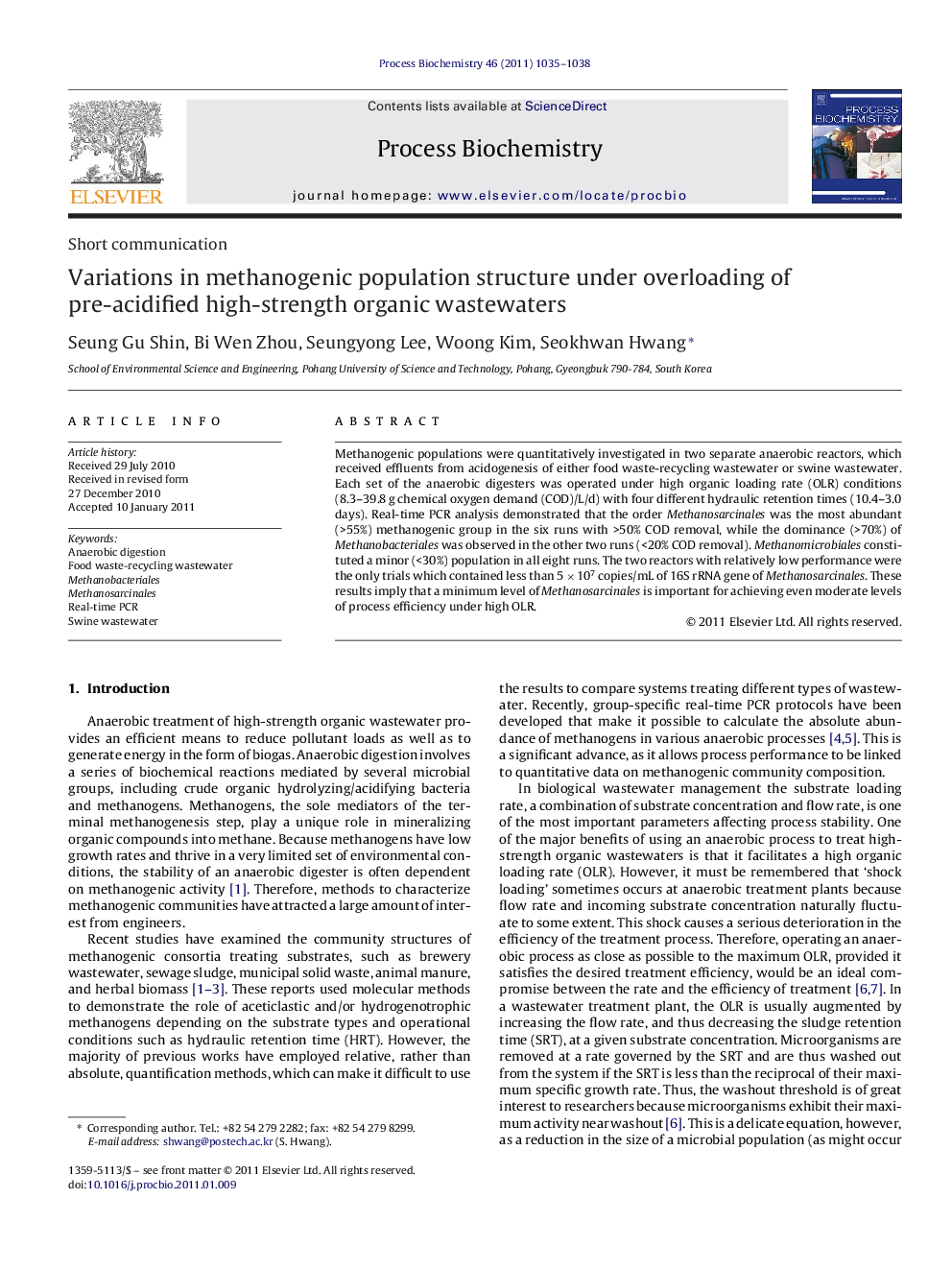| Article ID | Journal | Published Year | Pages | File Type |
|---|---|---|---|---|
| 34894 | Process Biochemistry | 2011 | 4 Pages |
Methanogenic populations were quantitatively investigated in two separate anaerobic reactors, which received effluents from acidogenesis of either food waste-recycling wastewater or swine wastewater. Each set of the anaerobic digesters was operated under high organic loading rate (OLR) conditions (8.3–39.8 g chemical oxygen demand (COD)/L/d) with four different hydraulic retention times (10.4–3.0 days). Real-time PCR analysis demonstrated that the order Methanosarcinales was the most abundant (>55%) methanogenic group in the six runs with >50% COD removal, while the dominance (>70%) of Methanobacteriales was observed in the other two runs (<20% COD removal). Methanomicrobiales constituted a minor (<30%) population in all eight runs. The two reactors with relatively low performance were the only trials which contained less than 5 × 107 copies/mL of 16S rRNA gene of Methanosarcinales. These results imply that a minimum level of Methanosarcinales is important for achieving even moderate levels of process efficiency under high OLR.
